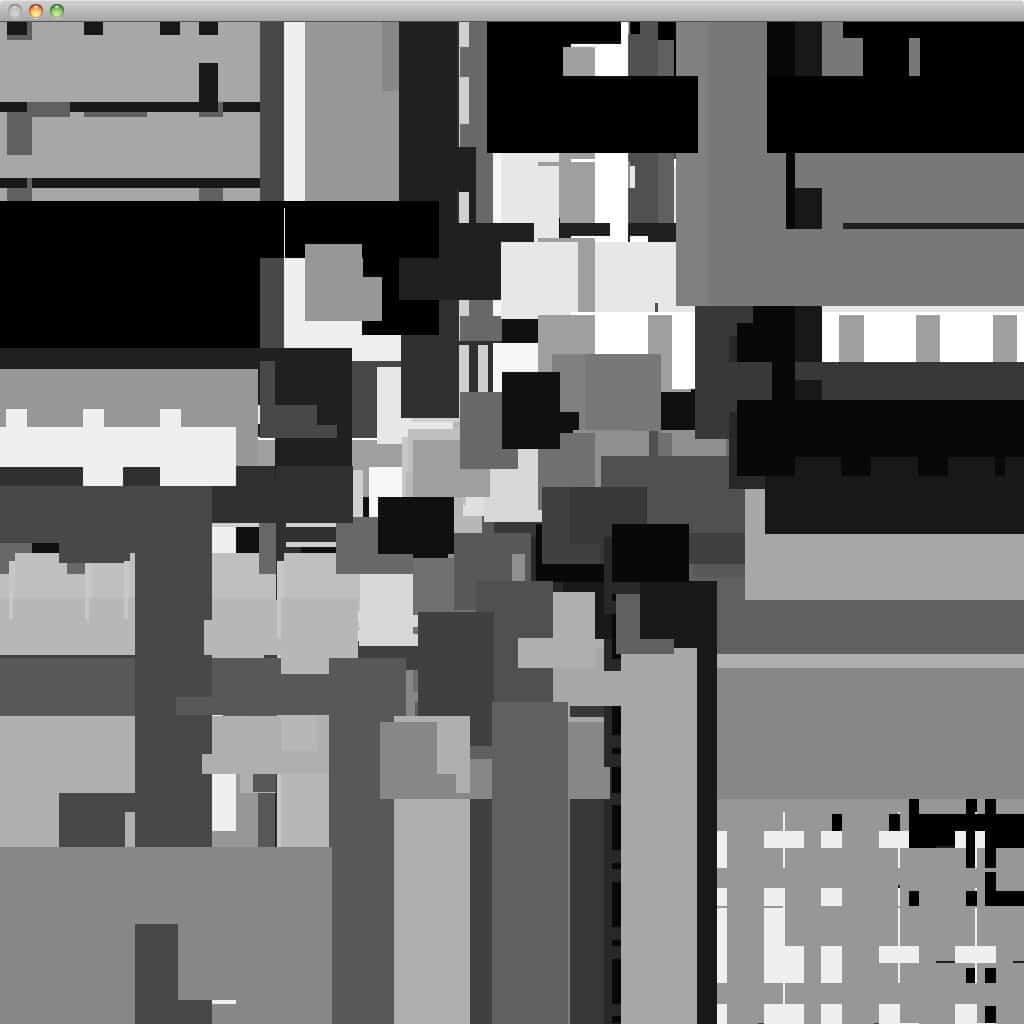GPU artifacting can ruin your gaming or work experience. It causes weird glitches on your screen, like lines, dots, or color changes. These issues happen when your graphics card has problems.
GPU artifacting often means your graphics card is overheating, overclocked, or damaged. It can also occur if your card’s memory or processor is failing. Sometimes, outdated drivers or software conflicts can cause artifacting too.
Fixing GPU artifacting can be simple or complex. You might just need to update your drivers or clean your computer. In other cases, you may have to replace your graphics card. Quick action can help prevent worse damage to your GPU.
Image Credit: https://www.flickr.com/photos/28622838@N00/6102793162
Troubleshooting GPU Artifacting: Causes and Solutions
Seeing strange visual glitches or distortions on your screen? You might be experiencing GPU artifacting. These visual anomalies can range from flickering textures and strange colors to completely garbled images. But don’t worry, there are potential causes and solutions to help you resolve this issue.
What Causes GPU Artifacting?
GPU artifacting typically stems from problems with your graphics card. Here are some common culprits:
- Overheating: Excessive heat can cause the GPU to malfunction, resulting in visual artifacts.
- Driver Issues: Corrupted or outdated graphics drivers can lead to instability and artifacting.
- Hardware Problems: A failing GPU, damaged memory, or other hardware issues can cause persistent artifacting.
- Overclocking: Pushing your GPU beyond its intended clock speeds can lead to instability and artifacting.
- Software Conflicts: Certain software or game settings may not be compatible with your GPU, triggering artifacting.
Troubleshooting Steps
Here are some steps you can take to troubleshoot GPU artifacting:
- Check Temperatures: Monitor your GPU temperature using monitoring software. If it’s consistently high, improve cooling by cleaning the fans and vents or upgrading your cooling solution.
- Update Drivers: Download and install the latest graphics drivers from the manufacturer’s website (NVIDIA, AMD, or Intel).
- Roll Back Drivers: If updating didn’t help, try reverting to older drivers that were stable.
- Reduce Overclocking: If you’ve overclocked your GPU, try reducing the clock speeds or reverting to default settings.
- Adjust Game Settings: Lower graphics settings in games to reduce the load on your GPU.
- Test with Another GPU: If possible, test with a different graphics card to see if the problem persists. This helps isolate the issue.
- Check for Software Conflicts: Try closing unnecessary programs or performing a clean boot to identify potential software conflicts.
Troubleshooting GPU Artifacting
| Symptom | Possible Cause | Solution |
|---|---|---|
| Flickering textures | Overheating, driver issues | Improve cooling, update drivers |
| Strange colors or patterns | Hardware problems, overclocking | Reduce overclocking, test with another GPU |
| Garbled images | Failing GPU, memory issues | Test with another GPU, consider professional repair |
If you’ve tried these steps and the artifacting continues, it might indicate a serious hardware problem with your graphics card. In this case, you may need to consider professional repair or replacement.
Key Takeaways
- GPU artifacting causes visual glitches like lines, dots, and color changes on your screen
- Common causes include overheating, overclocking, and hardware damage
- Fixes range from simple driver updates to replacing the graphics card
Understanding GPU Artifacting
GPU artifacting causes visual glitches in images, videos, and games. These issues can range from minor annoyances to major problems that make graphics unusable.
Symptoms of GPU Artifacting
GPU artifacting shows up in many ways. Common signs include:
- Flickering or flashing screens
- Random lines or shapes appearing
- Color shifts or distortions
- Static or snow-like effects
- Black squares or other geometric glitches
These visual problems often happen during gaming or when running graphics-heavy programs. They may come and go or be constant. Sometimes artifacts only show up in certain parts of the screen.
Texture issues are another symptom. Games might display badly textured guns, scenery, or characters. Lighting effects can also look wrong or glitchy.
Potential Impact on Gaming and Rendering
GPU artifacts can ruin the gaming experience. Visual glitches make it hard to see what’s happening in-game. This hurts gameplay and enjoyment.
For 3D rendering, artifacts cause big problems. They can make final outputs unusable. This wastes time and effort for artists and designers.
Video editors may see glitches in their projects. This makes it tough to produce clean, professional-looking videos.
Some artifacts are small and don’t affect much. Others are so bad they make the GPU unusable. Severe artifacting often means the graphics card is failing and needs replacement.
Common Causes and Diagnosis
GPU artifacting can stem from various hardware and software issues. Identifying the root cause is key to fixing the problem and preventing future occurrences.
Hardware Failures and Physical Damage
Physical damage to a GPU can lead to artifacting. This includes cracked PCBs, loose connections, and faulty VRAM chips. Wear and tear over time may also cause problems. Solder joints can crack, leading to poor connections. Manufacturing defects, though rare, can cause issues from the start.
Signs of hardware failure:
- Artifacts appear in multiple programs
- Problems persist after driver updates
- Visual glitches worsen over time
Check for visible damage on the GPU. Look for bulging capacitors or burn marks. Test the card in another system if possible to rule out other components.
Heat Management and Environmental Factors
Overheating is a common cause of GPU artifacts. High temperatures can make the GPU unstable, leading to visual glitches.
Factors that contribute to overheating:
- Dust buildup
- Poor case airflow
- Failing cooling fans
- Dried thermal paste
Monitor GPU temperatures using software tools. Normal temps range from 60-85°C under load. If temps exceed 90°C, take action to improve cooling.
Clean dust from the GPU and case regularly. Replace thermal paste if needed. Ensure case fans are working and positioned for good airflow.
Driver Instability and Software Errors
Outdated or corrupted GPU drivers can cause artifacting. Software conflicts or bugs may also lead to display issues.
Steps to address software-related artifacts:
- Update GPU drivers to the latest version
- Perform a clean driver install
- Roll back to a previous driver if issues started after an update
- Check for Windows updates
Overclocking can cause instability. If you’ve overclocked your GPU, try running at stock speeds. Underclocking slightly can sometimes fix artifact issues caused by aging hardware.
Test your GPU with different games and benchmark tools. If artifacts only appear in one program, it may be a software-specific issue.
Resolving Issues and Prevention
GPU artifacting can be fixed through various methods. Proper maintenance and understanding warranties are key to preventing and addressing these problems.
Effective Solutions and Fixes
Update graphics drivers regularly. Old drivers can cause artifacting. Download the latest version from the manufacturer’s website or use tools like GeForce Experience for NVIDIA cards.
Lower graphics settings in games. High settings can strain the GPU, leading to artifacts. Reduce resolution, texture quality, and other demanding options.
Underclock the GPU. Use software like MSI Afterburner to lower clock speeds. This can help if overclocking caused the issue.
Check cooling systems. Clean dust from fans and heatsinks. Make sure case airflow is good. Consider adding more fans or upgrading to better cooling solutions.
Best Practices for GPU Maintenance
Clean the GPU regularly. Use compressed air to remove dust. This helps prevent overheating.
Monitor temperatures. Use software to track GPU temps while gaming. If they’re too high, improve cooling or lower settings.
Avoid overclocking if your system isn’t built for it. Pushing a GPU too hard can lead to artifacts and damage.
Keep the PC in a cool, clean area. Avoid placing it in hot or dusty spots.
Run stress tests like FurMark to check stability. This can help catch issues before they cause problems in games.
Understanding Warranties and RMA Processes
Check warranty terms when buying a GPU. Most offer 1-3 years of coverage.
Keep proof of purchase. You’ll need this for warranty claims.
Document the issue. Take screenshots or videos of artifacts. This helps when explaining the problem.
Contact the manufacturer or retailer. Follow their RMA process. They may offer repairs, replacements, or refunds.
Be patient. RMA processes can take weeks. Have a backup GPU if possible.
Some companies offer advanced RMA. They send a replacement before you return the faulty card. This reduces downtime.







